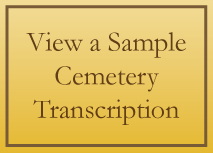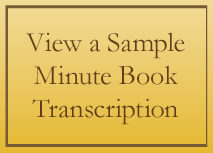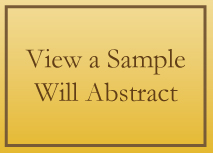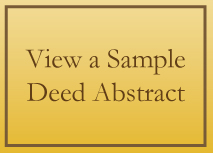Publication Guidelines
Determine at the outset of a project how you wish to record the information. Most projects either transcribe or abstract records. An abstract is a summary that includes selected, pertinent information for each document while a transcription includes all information as it appears in the original source.
Cemeteries
 In most cases a book should contain all the cemeteries within a county. In the case of a single county, a book may contain a specific portion of the cemeteries or a large metropolitan cemetery. Authors covering a large county are encouraged to consider publishing multiple volumes.
In most cases a book should contain all the cemeteries within a county. In the case of a single county, a book may contain a specific portion of the cemeteries or a large metropolitan cemetery. Authors covering a large county are encouraged to consider publishing multiple volumes.
In cases where a previously published cemetery book is incomplete or incorrect, the Foundation may approve an application for a new cemetery book. In such a case, if the author uses information from the earlier book, complete citations must be used.
All information, including epitaphs, from every marker must be recorded. Information that is not legible must be indicated. The author may choose to include information from an additional source. All additional information must include source citations.
Markers must be recorded in the order they are located, usually in order by row number and marker number – not in alphabetical order. All tombstones must be transcribed. Uninscribed markers should be noted with a description such as field stone marker at head or foot. Sometimes there are depressions or “grave sinks” which indicate a burial, in which case, they should be mentioned in the sequence with the other graves.
Cemeteries should be arranged in alphabetical order by name of cemetery. As previously mentioned, grave markers within the cemetery must be transcribed in the order in which the graves appear. Complete directions to the cemeteries, including GPS coordinates, should be given. Maps and diagrams are helpful as are directions from a nearby landmark. A description of each cemetery, including its condition, also are recommended.
Indexes should include full names. Maiden names should be indexed when given.
Minute Book Transcription
 Court Minutes are the official record of the proceedings of the Court. Unlike record books that deal with one specific type of record such as deeds, wills, and marriages; minutes include information on the myriad activities of the court. For this reason, transcriptions rather than abstracts are usually a more appropriate way of recording the information.
Court Minutes are the official record of the proceedings of the Court. Unlike record books that deal with one specific type of record such as deeds, wills, and marriages; minutes include information on the myriad activities of the court. For this reason, transcriptions rather than abstracts are usually a more appropriate way of recording the information.
Source citations should identify the type of minute book being transcribed (i.e. Superior Court Minutes, Inferior Court Minutes for Ordinary Purposes etc.). Each transcribed page should contain the page number from the original book. Front matter should include the location and type (microfilm, original, bound copy, loose records, etc.) of the original records.
A full name index for all entries should be included.
Wills
 Wills generally are recorded as abstracts, eliminating repetitive (boilerplate) language. Abstracts should be thorough, recording bequests in original order and in original language. Include all information, including witnesses, date of will, and date of probate. Names may be in boldface type.
Wills generally are recorded as abstracts, eliminating repetitive (boilerplate) language. Abstracts should be thorough, recording bequests in original order and in original language. Include all information, including witnesses, date of will, and date of probate. Names may be in boldface type.
Source citations should be clear and complete, so researchers can find the original documents. Front matter should include the location and type (microfilm, original, bound copy, loose records, etc.) of the original records. A list of abbreviations used in the abstracts should be included in the front matter.
Index may indicate principals in documents by highlighting those page numbers in some manner. Example: John Finster, 2, 24, 95. Page 24 is where the will of John Finster will be found, and he is mentioned in wills on pages 2 and 95.
Deed Abstracts
 Deeds generally are recorded as abstracts, eliminating repetitive (boilerplate) language. Abstracts should be thorough, including complete land description, with the body of the document kept in original order. Names may be set in boldface type. A list of abbreviations used in the abstracts should be included in the front matter.
Deeds generally are recorded as abstracts, eliminating repetitive (boilerplate) language. Abstracts should be thorough, including complete land description, with the body of the document kept in original order. Names may be set in boldface type. A list of abbreviations used in the abstracts should be included in the front matter.
All names should be indexed, and it is desirable to index geographic names also. Indexes may indicate principals in documents by highlighting those numbers in some manner. Example: William Golightly 1, 25, 102, 396. William Golightly bought or sold land on page 25; on other pages he is named in some other capacity.
